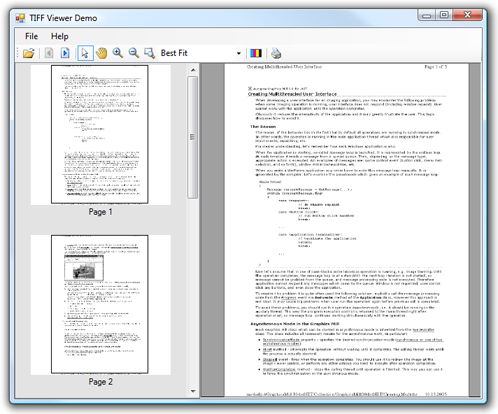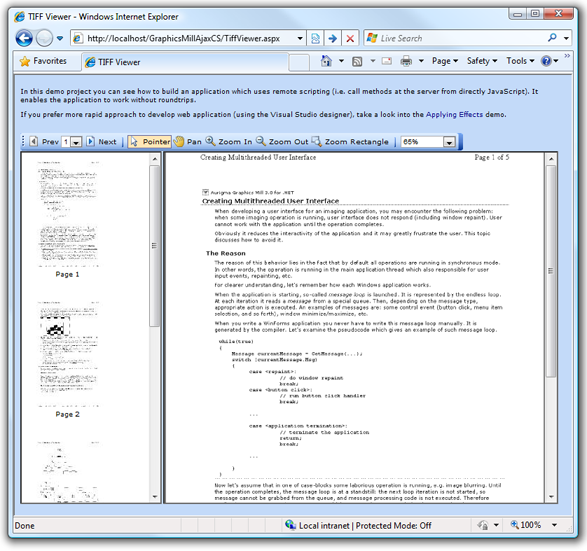Document Imaging
Document imaging is another field where Graphics Mill for .NET can be successfully used. If you are creating such kind of applications, you can use the following benefits.
1-bit Images Support
Graphics Mill for .NET is designed to operate 1-bit images without converting them into 8-bit per channel RGB or grayscale. This way it uses the main advantage of the 1-bit storage - it is extremely memory-friendly. Whenever you load files into memory, apply transforms, or draw text/lines on such images, the bitmap stays very compact and no extra resources are used.
Some image algorithms of Graphics Mill for .NET are specially designed for 1-bit images. Such effects as median, minimum, and maximum filters can be used to remove noise, dilate or erose object in the 1-bit image.
Strong TIFF File Format Support
Graphics Mill for .NET allows to load files of different formats including TIFF - one of the the most wide-spread format for storing and manipulating document images. In particular:
- Load both single and multiple pages from TIFF files.
- Get thumbnails for the TIFF files (even for individual pages).
- Save TIFF files, both single and multiple pages.
- Use different compression algorithms such as LZW, Deflate/ZIP, RLE, CCIT Group 3/4, Huffman, etc.
We have tested Graphics Mill for .NET with a lot of different TIFF files, and it can load even those files which fail to be loaded by some popular and wide-spread software.
Write-Only PDF Support
PDF is another popular document interchange file format. It is often used for printing.
Graphics Mill for .NET can save raster images in PDF format (both single and multiple pages). It supports several compression options, including deflate (ZIP) and JPEG.
Graphics Mill for .NET cannot load PDF files though.
Windows and Web Controls Designed to Display Documents
Visual controls of Graphics Mill for .NET have a number of features which are useful when displaying 1-bit documents. In particular:
- When zooming the document, the scale-to-gray technique is used. It makes text and other objects in the image look smooth. The text is readable even with strong zoom ratios.
- Automatic zooming modes are supported, in particular "fit to width", "fit to height", "fit to page".
- Images that have different horizontal and vertical resolution are displayed correctly. Typical examples of such images are faxes. Usually in such images horizontal resolution is higher than vertical, which makes them look oblated.
- ...and many other features.
Examples of Usage
Graphics Mill for .NET is a highly versatile component and can be used in a wide range of applications. Here are few examples:
- Fax viewer;
- Batch document processor;
- Document database Windows client:

- Document database Web client:
